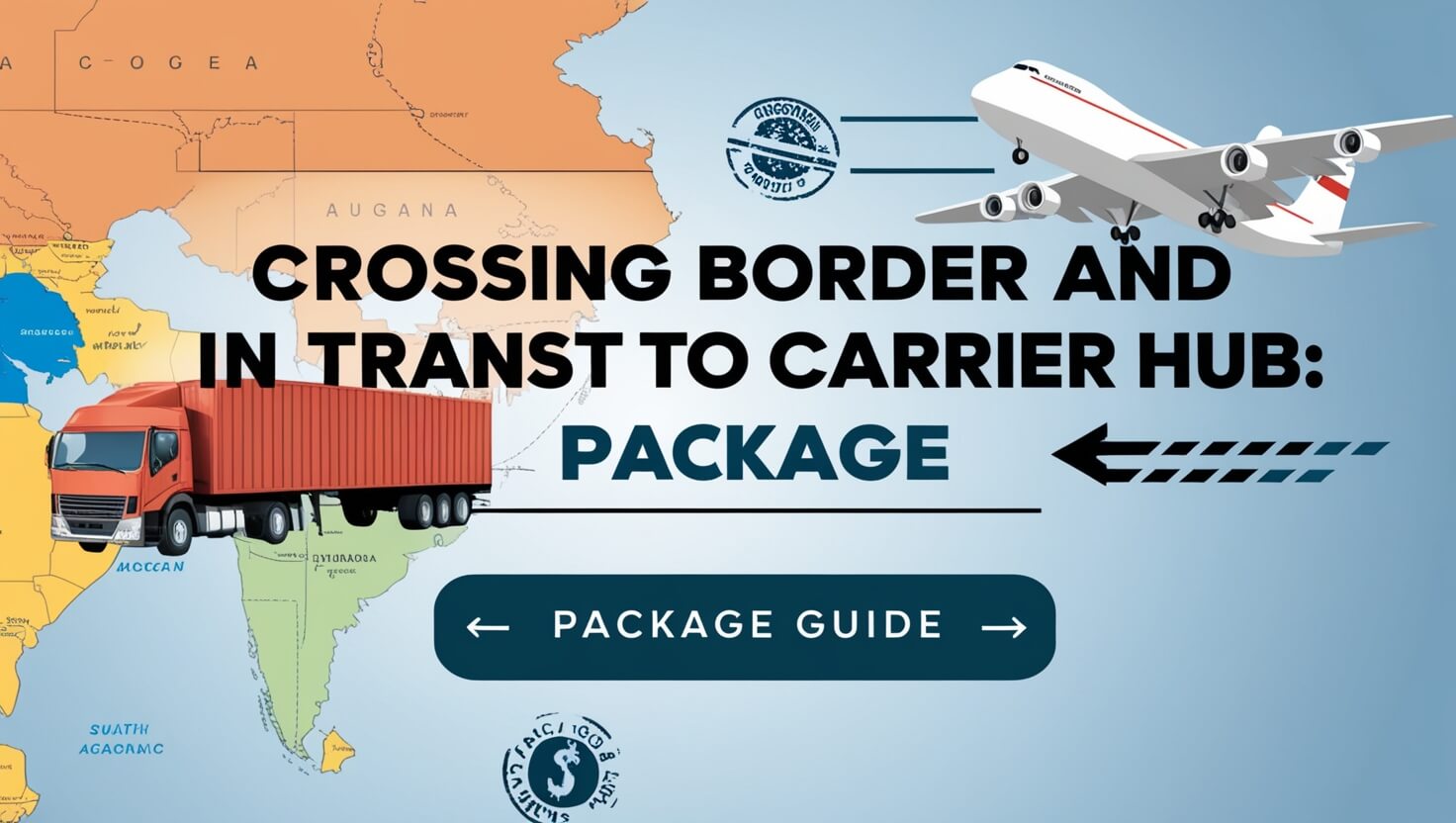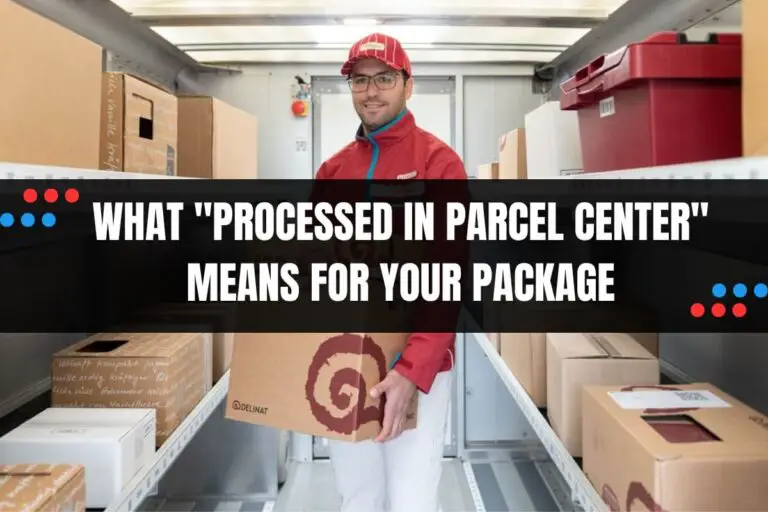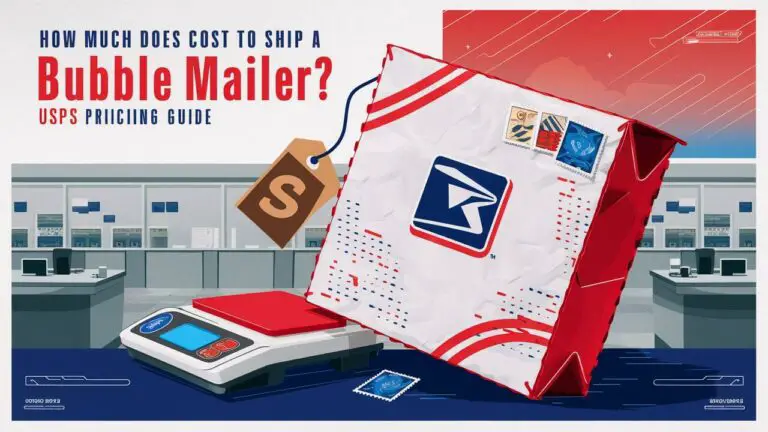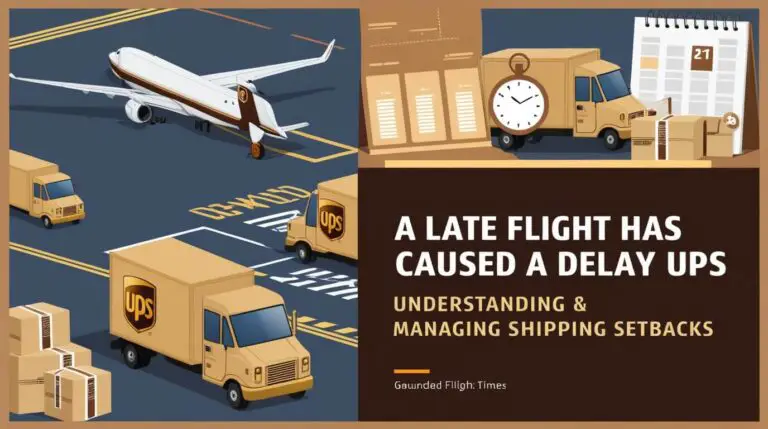Crossing Border and In Transit to Carrier Hub: Package Guide

Tracking an international package can be thrilling, but some updates may leave you scratching your head. The status “crossing border and in transit to carrier hub” often pops up and sparks curiosity. This key phase shows your package moving between countries and getting closer to you.
We’ll break down what this status really means for your shipment. You’ll learn about customs checks, sorting centers, possible hold-ups, and ways to make international shipping smoother. After reading, you’ll better understand where your package is and what happens next.
What Does “Crossing Border and In Transit to Carrier Hub” Mean?
Breaking Down the Tracking Status
The phrase “crossing border and in transit to carrier hub” actually combines two important steps in your package’s journey:
- Crossing Border: Your package has left its country of origin and is entering the destination country.
- In Transit to Carrier Hub: The shipment is moving toward a central sorting facility in the destination country.
This status update tells you that your package is making significant progress. It’s cleared export procedures and is now on its way to a major distribution point in your country.
The Journey of Your International Package
International shipping involves a complex series of steps. When you see the “crossing border and in transit to carrier hub” status, your package has already:
- Left the sender’s location
- Passed through the origin country’s export procedures
- Boarded a plane, ship, or other transport
- Arrived at the destination country’s border
Now, it’s in the process of:
- Clearing import customs
- Moving to a carrier’s main sorting facility
This update marks the transition from international transit to domestic delivery processes.
The Significance of “Crossing Border” in Package Tracking
Customs Clearance and Border Procedures
The “crossing border” part of the status is a big deal. It means your package has successfully left its origin country and is entering the destination country. This process involves:
- Export clearance from the origin country
- Physical transport across borders
- Import procedures in the destination country
During this time, customs officials check the package’s contents, ensure proper documentation, and apply any necessary duties or taxes.
Common Reasons for Border Delays
While “crossing border” is usually smooth, sometimes packages get held up. Common reasons include:
- Incomplete or incorrect customs forms
- Restricted or prohibited items
- Random security checks
- High volume of incoming packages
If your package seems stuck at this stage, don’t panic. Most delays are resolved within a few days.
Decoding “In Transit to Carrier Hub”
What is a Carrier Hub?
A carrier hub is a large sorting center where packages are organized for delivery. Think of it as a busy package airport. Shipments arrive from various locations, get sorted based on their final destinations, and are sent out on trucks or planes for the next leg of their journey.
The Role of Carrier Hubs in Package Delivery
Carrier hubs play a crucial role in efficient package delivery. Here’s what happens at a hub:
- Packages arrive in bulk from various sources
- Each package is scanned and sorted by destination
- Items are grouped with others heading to the same area
- Sorted packages are loaded onto vehicles for the next transit stage
This centralized system helps carriers optimize routes and speed up delivery times.
The Step-by-Step Process of International Shipping
From Sender to Border Crossing
- Package pickup or drop-off
- Processing at origin sorting facility
- Transportation to international departure point
- Customs export clearance
- Loading onto international transport (air, sea, or ground)
From Border to Carrier Hub
- Arrival at destination country border
- Import customs clearance
- Transportation to main carrier hub
- Processing and sorting at the hub
Final Delivery Stages
- Transport to local distribution center
- Sorting for local delivery routes
- Loading onto delivery vehicle
- Final delivery to recipient
Potential Delays and Issues During “Crossing Border and In Transit” Phase
Customs Hold-ups
Customs procedures can sometimes cause delays. Reasons might include:
- Needing additional information about the package contents
- Assessing import duties or taxes
- Verifying compliance with import regulations
If your package is held at customs, the sender might need to provide extra details.
Transportation Challenges
Even after clearing customs, packages can face transport issues:
- Missed connections between different carriers
- Sorting errors at hubs
- Capacity limitations on certain routes
These hiccups are usually resolved quickly, but they can add a day or two to delivery times.
Weather and External Factors
Mother Nature sometimes throws a wrench in shipping plans. Severe weather, natural disasters, or even major events can disrupt normal shipping routes and schedules.
Tracking Your Package: What to Expect After “In Transit to Carrier Hub”
Subsequent Tracking Statuses
After your package leaves the carrier hub, you might see updates like:
- “Departed Carrier Facility”
- “In Transit to Local Distribution Center”
- “Out for Delivery”
These statuses indicate your package is in the final stages of its journey.
Estimated Delivery Times
Delivery estimates vary based on shipping method and destination. Once your package reaches the “in transit to carrier hub” stage, typical timeframes are:
- 1-3 days for domestic locations
- 3-7 days for nearby countries
- 7-14 days for far international destinations
Remember, these are estimates. Actual delivery times may vary.
Tips for Smooth International Shipping
Proper Documentation
To avoid customs delays:
- Fill out customs forms accurately and completely
- Include a detailed description of package contents
- Declare the correct value of items
- Check destination country import restrictions
Choosing the Right Shipping Method
Consider these factors when selecting a shipping service:
- Urgency of delivery
- Package size and weight
- Value of contents
- Budget for shipping costs
Faster services cost more but reduce the chance of delays.
Frequently Asked Questions About “Crossing Border and In Transit to Carrier Hub”
How long does a package stay in this status?
Typically 1-3 days, but it can vary based on customs procedures and transport schedules.
Can I pick up my package from the carrier hub?
Generally, no. Carrier hubs are large, secure facilities not open to the public.
What if my package is stuck in this status for a long time?
If there’s no update for 5-7 days, contact the carrier or seller for more information.
Do I need to do anything when my package is in this status?
Usually not. The carrier handles all necessary procedures at this stage.
Will I have to pay extra fees when my package crosses the border?
Possibly. Some countries charge import duties or taxes, which you may need to pay before delivery.






